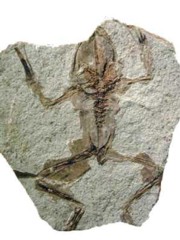Academy of Sciences of the Czech republic › Science and Research › Significant and interesting projects › Non-Life Sciences Division
Origin and Evolution of Frogs
Evolution of life in the geological past is among the most significant fields in contemporary geology. Mainly it is focused on fossils which represent immediate evidence of organisms existing many million years ago. However, fossils are often fragmentary and thus incomplete, and such characters like muscles, circulatory system, or brain structure have to be inferred from anatomical structure of related extant organisms. Comparisons between extant organisms with their early ancestral forms may provide useful data on general evolutionary trends. Anurans (frogs and toads) turned out to be appropriate model organisms for such studies because their continuous palaeontological record begins as early as 200 million years ago. They are highly adaptable so they have not been negatively affected by any global extinction event. Moreover, their larvae (tadpoles), despite they possess cartilaginous and thus not much resistent skeleton, are often nicely preserved. Hence, they are the only animal group in which entire development, from fertilized egg till adult, may be investigated on fossils. Current research carried out in the Laboratory of Palaeontology of the Geological Institute, in cooperation with the Department of Zoology, Charles University, Prague and some foreign institutions, is focused on factors which affected various aspects of amphibian development in course of the last 125 million years.

CONTACT PERSON:
Doc. RNDr. Zbyněk Roček, DrSc.
phone: 233 087 223
e-mail: rocek@gli.cas.cz
More details on the project: http://rocek.gli.cas.cz/





